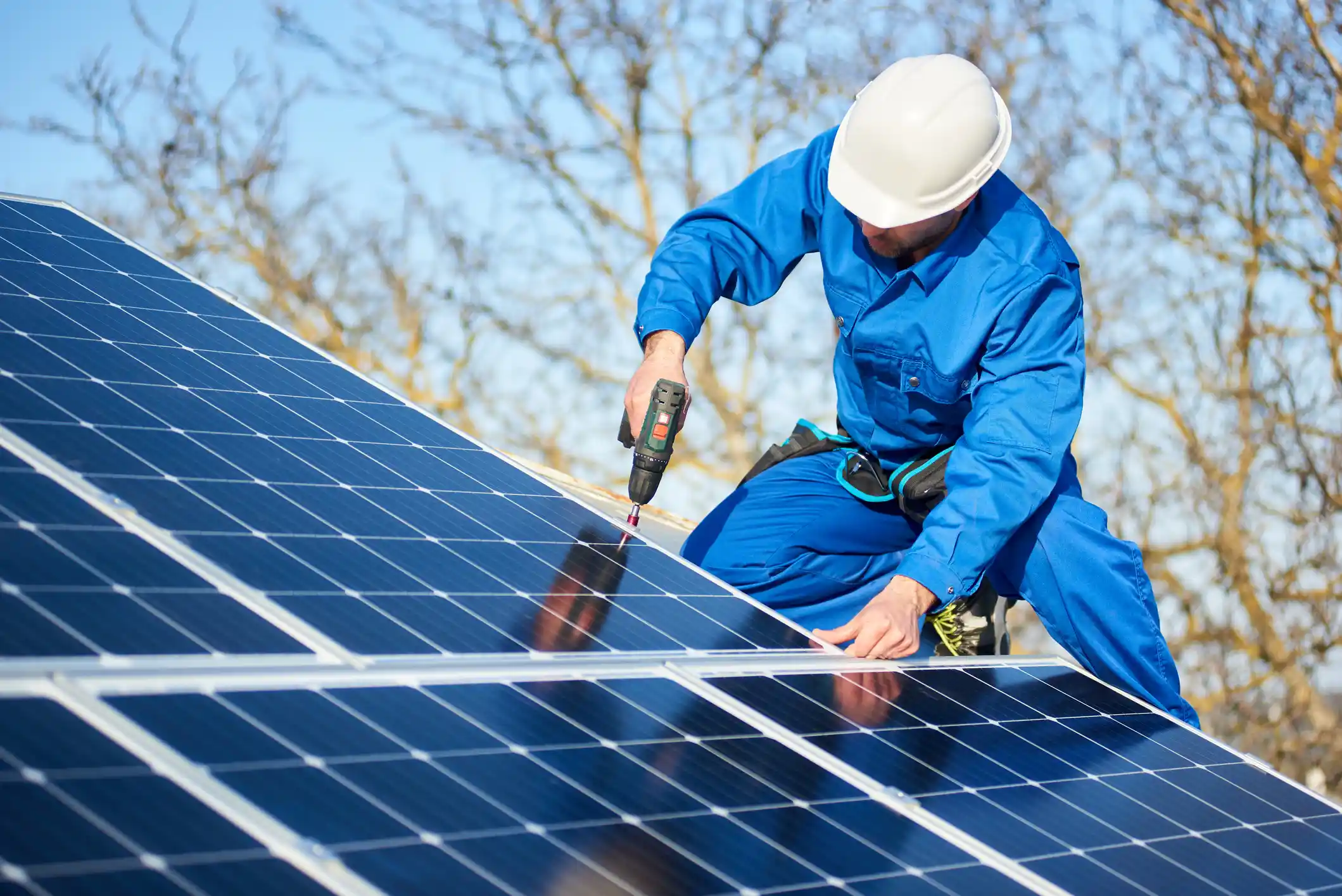POSTED
September 13, 2024
Why Solar Farms Are the Future of ESG Investments
In recent years, there has been a shift in the way people invest. More and more, investors are looking for opportunities that not only provide returns on their investment but also have positive environmental and social impacts. Within this trend, Environmental, Social, and Governance (ESG) investing has gained significant traction.

In fact, ESG investing is expected to gain in popularity, with European regulations setting high standards for sustainability reporting. These regulations have a substantial influence on global markets, including North America. So much so, that financial institutions and corporations are increasingly embedding ESG criteria into their business and investment decisions. There has also been a noticeable increase in private capital flowing into ESG investments, supported by new government incentives and regulations.
Overall, ESG investments are expected to continue growing, with projections indicating that ESG assets could surpass $50 trillion by 2025, making up a significant portion of global assets under management. In this article, we’ll look at what ESG investing is and how utility-scale solar investments fit into the ESG framework.
What is ESG?
ESG stands for Environmental, Social, and Governance. ESG criteria considers how well public companies safeguard the environment and communities where they work. It also looks at how well they ensure their management and corporate governance meet high standards. It assumes that there are certain environmental, social, and corporate governance factors that impact a company’s overall performance.
By considering ESG criteria, investors get a holistic view of the companies they back, which can help mitigate risk while identifying attractive financial opportunities. ESG, at its core, is about influencing positive changes in society by encouraging better investment practices. Here is a brief overview of the criteria involved with ESG investing.
Environmental
Environmental criteria look at how a company performs as a steward of nature. It includes management of waste, pollution, resource depletion, greenhouse gas emissions, deforestation, and climate change impacts. The criteria also evaluate any environmental risks a company might face and how the company plans to manage those risks.
Social
Social criteria evaluate how a company manages relationships with employees, suppliers, customers, and communities. Key aspects include company culture and diversity, human rights, community relationships, health and safety, and how well the company adheres to ethical labor practices.
Governance
Governance criteria involve a set of rules or principles defining rights, responsibilities, and expectations among stakeholders in the governance of corporations. These criteria include accurate and transparent accounting methods, the ability to avoid conflicts of interest in their choice of board members, and executives, shareholder rights, and no unlawful practices.
Environmental Benefits of Utility-Scale Solar Power

Utility-scale solar farms are one of the most effective ways to reduce carbon emissions. Coal, natural gas, and oil-fired power plants can emit over 2,000 pounds of CO2 equivalent per megawatt hour (MWh). For comparison, the lifecycle emissions of solar power, including manufacturing, installation, and decommissioning, is approximately 95 pounds per MWh. Even better, solar panels offset these emissions within 2 to 3 years of operations. After this payback period, they continue reducing carbon emissions without adding any more greenhouse gasses to the atmosphere.
Some solar farms also help to maintain or even increase biodiversity in an area. For example, some utility-scale solar farms integrate native grasses and wildflowers into their sites. This supports biodiversity and even enhances agricultural productivity on nearby farms by boosting pollination.
With dual-use land strategies, large-scale solar farms can maximize the productivity of the land, increasing its positive environmental impact. This approach uses land simultaneously for solar energy production and agricultural activities. Some solar farms, for instance, are designed to allow grazing underneath the panels or incorporate crops that benefit from the partial shade provided by the panels. This helps address land-use conflicts and preserves agricultural land while generating renewable energy. Shasta Power currently has a dual-use project in development that includes grazing land for goats.
Social Benefits of Utility-Scale Solar Power

Utility-scale solar projects have a wide range of positive impacts on local communities. During the building phase alone, a single large solar farm can create hundreds of jobs over several months or even years. These projects also often lead to upgrades in local infrastructure, improving roads and electrical grids to support the new installations. These upgrades can lead to a more resilient grid for host communities and more outside investment from companies.
Overall, solar projects can significantly drive local communities’ economic growth. These communities can see increased spending by workers involved in the construction and maintenance of the installation. Local governments can also see increased revenue from higher property taxes, increased sales tax revenue, and increased income taxes.
Governance and Compliance
Solar farms must adhere to a range of stringent regulatory standards that ensure they are safe, efficient, and environmentally responsible. For example, utility-scale solar projects undergo thorough environmental impact assessments before construction starts. At Shasta, we conduct several assessments, including wetlands delineation, habitat surveys, archeological analysis, and geotechnical studies, among others. These assessments ensure that we can mitigate any potentially negative effects on the ecosystem.
Solar projects also require companies to report regularly to stakeholders like investors, local communities, and regulators. Effective governance of solar projects comes from involving key groups. That is why we regularly seek direct feedback from members of the community and local governments to gather input and address any concerns they might have. This transparency helps build trust and shows a commitment to ethical practices.
Financial Benefits of Utility-Scale Solar Investments
Utility-scale solar projects don’t just excel at meeting ESG criteria. They also can provide a good return on your investment. Thanks to increasing demand for solar, decreasing costs, and favorable legislation, solar energy has never been more profitable.
For instance, many solar power plants engage in power purchase agreements (PPAs). PPAs allow power producers to sell electricity at a predetermined price for a specified period of time, typically ranging from 10 to 25 years. Recent legislation like the Inflation Reduction Act (IRA) and Production Tax Credit (PTC) are helping reduce the cost of solar, making it a more viable energy source.
On average, the internal rate of return on a utility-scale solar farm is between 5% and 8%, depending on the specific project and market conditions. This can equal 5 to 8 million dollars in revenue on a 100 million dollar project. At Shasta, we typically target an IRR of over 12% over the life of our funds. We also make it easy for you to invest. Simply create an account, verify your eligibility to invest, sign the subscription agreement, and then wire your investment.
Large-scale solar projects tick a lot of boxes for ESG investors. They are an excellent way to reduce CO2 emissions. They can also promote healthy ecosystems, increasing biodiversity and maximizing land productivity. Utility-scale projects can also drive economic development for local communities. This is especially important in rural or economically depressed areas.
As we try to build a sustainable future, investors need to go beyond financial returns and consider the impact their investments have on the world. Investing in large-scale solar projects is a great way to do your part for the environment while potentially making good returns on your investment.
Looking to align your investments with your values?
At Shasta Power, we believe that utility-scale solar can do more than generate clean energy—it can power local economies, protect ecosystems, and offer long-term value to ESG-minded investors.
Shasta Power Fund II is being designed to offer access to high-impact solar projects for both everyday and accredited investors. If and when the offering is qualified, early participants may be eligible for incentives.
Join the waitlist today to stay informed and be part of the clean energy transition.
Profit with purpose. Progress with transparency. That’s people-powered prosperity.





